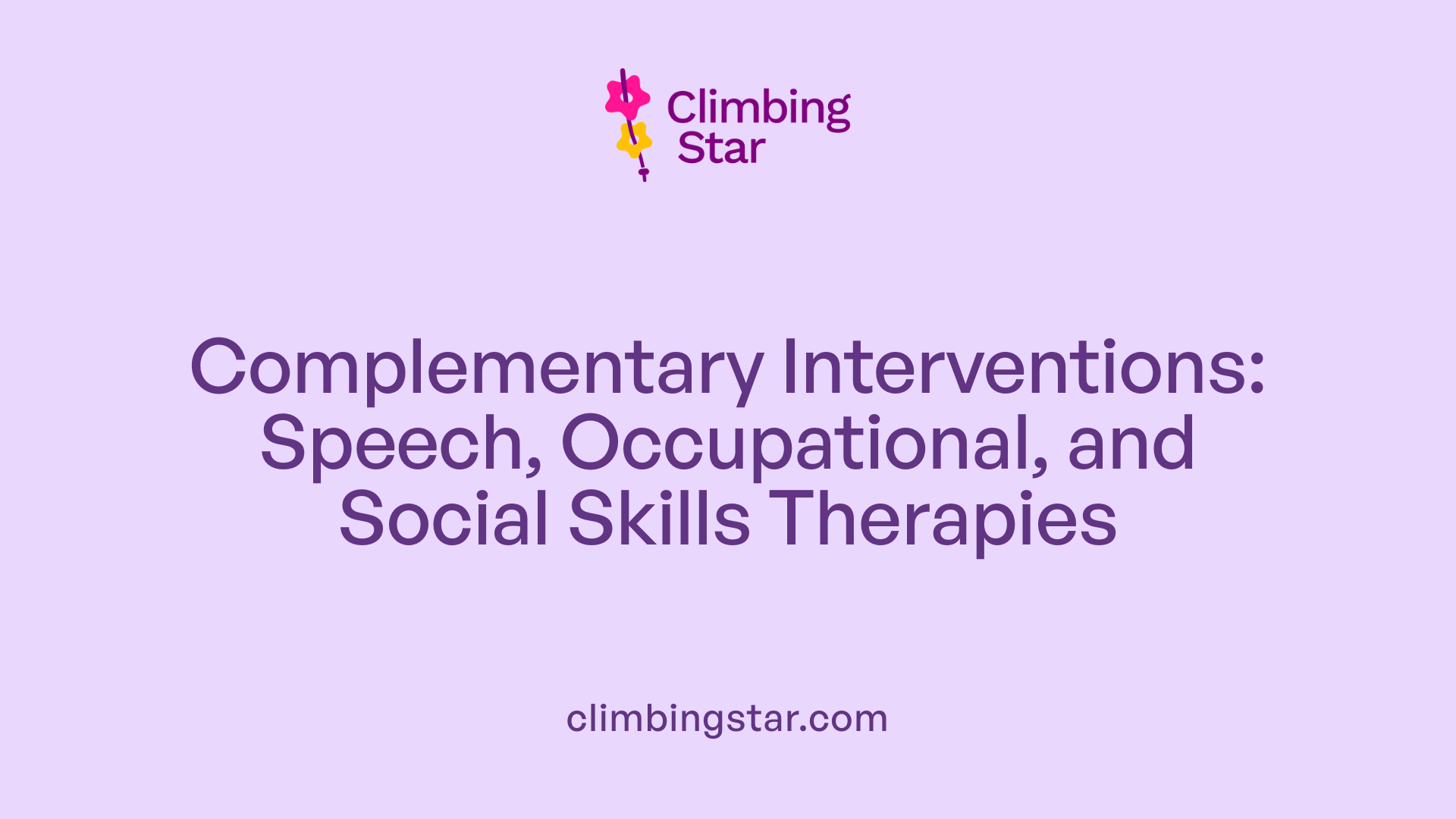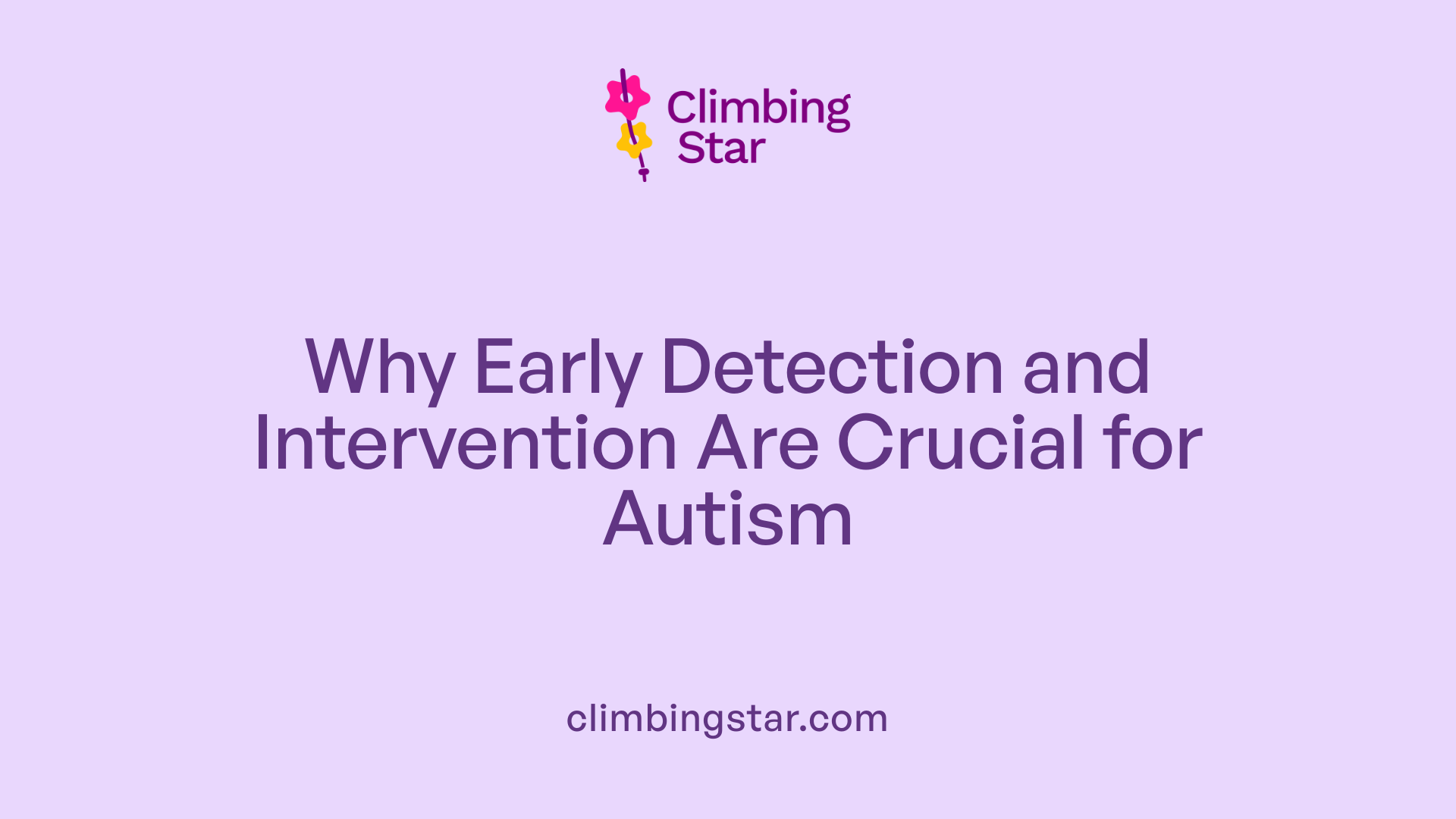The Ongoing Search for Answers in Autism
Autism spectrum disorder (ASD) is a complex neurodevelopmental condition characterized by challenges in social interaction, communication, and repetitive behaviors. The question of whether autism can be cured remains a significant and sensitive topic among families, clinicians, and researchers alike. While no definitive cure currently exists, numerous interventions and therapies aim to improve functioning and quality of life for individuals with autism. This article delves into the science of autism treatment, focusing on evidence-based approaches such as Applied Behavior Analysis (ABA), and considers what the future holds for those living on the spectrum.
What is Applied Behavior Analysis (ABA) Therapy and Its Role in Autism Treatment?
Definition of ABA
Applied Behavior Analysis (ABA) therapy is a scientifically validated approach that applies behavioral principles to assist children with autism spectrum disorder (ASD). It focuses on identifying environmental factors influencing behaviors and systematically teaching new skills using positive reinforcement.
Techniques used in ABA
ABA therapy involves several specific methods:
- Discrete Trial Training (DTT): Skills are broken down into small, manageable steps. Each step is taught using prompts and rewards, which are gradually reduced.
- Pivotal Response Training (PRT): This naturalistic technique boosts motivation to learn by targeting pivotal skills, like language and social communication, encouraging self-initiation and generalizing skills across environments.
- Early Start Denver Model (ESDM): Designed for very young children (12-48 months), ESDM combines ABA principles with play and social interaction, involving parents to enhance engagement.
Goals of ABA therapy
The primary goals of ABA include improving communication, social interactions, cognitive abilities, and adaptive behaviors. It works to reduce behaviors that interfere with learning or socialization and encourages the generalization of learned skills across different settings.
Effectiveness of early intensive ABA therapy
Research shows that early and intensive ABA therapy — typically at least 20 hours a week before school age — leads to significant improvements in socialization, communication, and expressive language. Children receiving such treatment often gain skills that allow them to integrate into regular classrooms and reduce dependence on specialized services. Meta-analyses confirm the positive impact of ABA-based interventions on core autism symptoms, although more research is needed to address variations in individual responses and optimize therapy customization.
Providers of ABA Therapy and Their Qualifications
Who Provides Applied Behavior Analysis Therapy, and What Qualifications Do They Have?
Applied Behavior Analysis (ABA) therapy is delivered by professionals who have specialized training in behavioral interventions for individuals with autism spectrum disorder (ASD) and related conditions.
The primary providers include:
Board Certified Behavior Analysts (BCBAs): These are master's-level practitioners who develop and oversee ABA programs. They have completed rigorous educational requirements, including a relevant master's degree, about 1,500-2,000 hours of supervised practical experience, and have passed the certification exam administered by the Behavior Analyst Certification Board (BACB).
Registered Behavior Technicians (RBTs): These are paraprofessionals who implement ABA treatment plans under the supervision of BCBAs. RBTs complete specific training and pass a competency-based exam.
Educational and Training Requirements
To qualify as a BCBA, individuals usually first obtain a bachelor's degree in psychology, education, or a related field, followed by a master's degree in applied behavior analysis or a similar discipline. Supervised experience is essential before certification, allowing practitioners to apply behavioral principles effectively.
Certification Process for BCBAs
The certification process requires completing a BACB-approved course sequence, acquiring supervised fieldwork hours, and passing the BACB certification exam. Post-certification, BCBAs maintain licensure by engaging in continuing education and adhering to ethical guidelines.
Settings Where ABA Is Provided
ABA therapy is offered in diverse environments including specialized clinics, schools, home-based programs, and community centers. Providers adapt interventions based on individual needs and contexts, ensuring the therapy is evidence-based and delivered ethically.
Overall, ABA professionals combine extensive education, practical training, and certification to provide effective, individualized therapy aimed at improving behavioral outcomes for children with ASD.
How ABA Therapy Addresses Behavioral Challenges in Autism
Targeting communication deficits
Applied Behavior Analysis (ABA) therapy specifically targets communication difficulties common in autism by teaching new skills through structured, incremental steps known as discrete trial training (DTT). It also employs pivotal response training (PRT), which focuses on enhancing motivation to initiate communication in natural settings. These strategies improve both expressive and receptive language skills, enabling individuals to better express needs and engage socially.
Reducing repetitive and challenging behaviors
ABA works to reduce repetitive behaviors and challenging actions such as aggression or self-injury by identifying environmental triggers and systematically modifying responses. Through consistent positive reinforcement of desirable behaviors and gradual fading of prompts, ABA encourages the replacement of problematic behaviors with socially appropriate alternatives.
Use of positive reinforcement and visual supports
The therapy relies heavily on positive reinforcement to shape behavior, rewarding desired actions to encourage repetition. Visual supports and structured routines also aid in comprehension and predictability, helping individuals with autism navigate social and daily tasks more successfully.
Tailoring ABA to individual needs
ABA's effectiveness stems from its individualized approach. Therapists assess each child's unique behavioral challenges and strengths, adapting intervention plans accordingly. This personalized methodology promotes better emotional regulation and improves overall quality of life by addressing specific triggers and promoting adaptive skills.
ABA therapy is recognized for its strong evidence base in improving communication, socialization, and reducing inappropriate behaviors in children with autism spectrum disorder. Early, comprehensive ABA interventions integrated with developmental and naturalistic techniques further enhance outcomes across settings such as home and school.
Evidence Supporting the Effectiveness of ABA Therapy

What evidence supports the effectiveness of ABA therapy for individuals with autism?
Applied Behavior Analysis (ABA) therapy is one of the most thoroughly researched treatments for Autism Spectrum Disorder (ASD). Multiple research studies, including randomized controlled trials and meta-analyses, have demonstrated its positive impact on children with autism.
A meta-analysis encompassing 14 randomized controlled trials with 555 participants aged 6 to 102 months showed that ABA-based interventions significantly improved areas such as socialization, communication, and expressive language. Notably, expressive language saw a strong effect (d = -3.52, p=0.01), indicating meaningful language gains in children undergoing ABA. These therapies, including models like the Early Start Denver Model (ESDM) and Discrete Trial Training (DTT), utilize systematic positive reinforcement and target pivotal skills essential for learning and daily functioning.
What long-term developmental gains are observed with ABA?
Early and sustained ABA interventions, particularly those conducted for at least two years before school age, have been linked to improvements in communication, social engagement, and cognitive skills. Some children receiving intensive ABA therapy can transition into regular classroom settings, demonstrating significant developmental progress.
Additionally, individualized ABA programs support generalization of skills across multiple environments, enhancing long-term benefits. While some children with initially lower adaptive behaviors show remarkable gains, overall improved social interactions and language development contribute to better functional outcomes.
What limitations exist in the research on ABA therapies?
Despite promising results, research on ABA interventions faces limitations. Variations in study design, sample sizes, participant characteristics, and intervention protocols create challenges in drawing definitive conclusions across all developmental domains. For example, while improvements in expressive language are significant, changes in IQ, receptive language, and repetitive behaviors often show less consistent outcomes.
Moreover, some interventions like the Picture Exchange Communication System (PECS) did not demonstrate significant pooled effects in certain analyses. Variability also arises from high treatment discontinuation rates and different treatment doses, which can affect outcome assessment.
Nevertheless, the overall evidence supports ABA as a foundational, evidence-based treatment that can improve key developmental challenges faced by children with ASD when implemented early and intensively.
Techniques and Models Within ABA Therapy

Discrete Trial Training (DTT)
Discrete Trial Training breaks complex skills into small, manageable steps. Each step is taught using prompts and rewards, which are gradually phased out to encourage independent skill use. This structured technique facilitates precise teaching and is effective in fostering learning in children with ASD.
Pivotal Response Training (PRT)
Pivotal Response Training enhances motivation and communication by focusing on crucial "pivotal" behaviors such as language, play, and social skills. It encourages self-monitoring and generalization of learned skills across different environments, making learning more natural and functional.
Early Start Denver Model (ESDM)
Designed for children aged 12 to 48 months, the Early Start Denver Model combines ABA principles with naturalistic, play-based interactions. It emphasizes parental involvement and warmth, which improves motivation and engagement. Clinical trials indicate this comprehensive program enhances cognitive and social outcomes in young children with ASD.
Lovaas Model
The Lovaas Model utilizes highly structured ABA methods tailored to individual needs. It relies on child-specific reinforcers and is typically applied to children between 2 and 8 years old. This model has historically been influential in early intervention, helping many children achieve meaningful progress.
Integration of Structured and Naturalistic Approaches
Modern ABA therapy often integrates both highly structured methods like DTT and naturalistic strategies embodied by PRT and ESDM. By balancing systematic skill-building with flexible, child-centered learning, therapists can create versatile interventions that cater to the unique needs of each child, promoting better generalization and long-term success.
Other Behavioral and Developmental Interventions Complementing ABA

How does speech therapy benefit children with ASD?
Speech therapy, provided by licensed speech-language pathologists, focuses on enhancing social communication skills in children with autism spectrum disorder. It is especially effective when combined with family involvement and educational support. Therapists utilize a variety of tools such as gestures, sign language, and picture communication systems to assist nonverbal children, promoting their ability to express needs and interact socially.
What role does occupational therapy play in supporting children with autism?
Occupational therapy addresses sensory integration challenges common in children with ASD and teaches essential life skills like dressing and writing. This therapy aims to improve children's independence and social behavior by helping them process sensory information more effectively and gain practical daily living skills.
How does physical therapy contribute to early intervention for ASD?
Physical therapy targets improvements in gross motor skills, coordination, and balance, which are critical areas of development for many children with autism. When incorporated into early intervention programs, physical therapy supports motor development that enhances overall functional abilities and participation in daily activities.
What are the social-relational and educational approaches used alongside ABA?
Social-relational approaches, like DIR ('Floor Time'), RDI, Social Stories, and social skills groups, concentrate on enhancing social skills and emotional connections. Educational methods such as TEACCH organize learning environments with visual aids and routines that cater to the preference for consistency among individuals with autism. These approaches provide complementary support by fostering social understanding and structured learning experiences.
| Intervention Type | Focus Area | Key Features and Benefits |
|---|---|---|
| Speech Therapy | Social communication | Uses gestures, signs, and pictures; family and school-based integration |
| Occupational Therapy | Sensory integration and life skills | Enhances independence; addresses sensory challenges |
| Physical Therapy | Motor development | Improves coordination, balance, and gross motor skills |
| Social-Relational Approaches | Social skills and emotional bonding | Includes DIR, RDI, Social Stories; promotes emotional connection |
| Educational Methods (TEACCH) | Learning environment structure | Visual supports, consistent routines to aid learning |
Pharmacological and Psychological Treatments in Autism Management

What Medications Are Used for Managing Autism-Related Symptoms?
Medications are commonly prescribed to address co-occurring symptoms in children with autism spectrum disorder (ASD), such as irritability, aggression, and self-injurious behavior. They are not intended to treat the core symptoms of ASD but aim to improve quality of life and reduce behavioral challenges. Risperidone and aripiprazole are two pharmacological agents approved by the U.S. Food and Drug Administration (FDA) for this purpose.
Which Drugs Are FDA-Approved for ASD Symptoms?
| Medication | FDA-Approved Use in ASD | Effectiveness and Monitoring |
|---|---|---|
| Risperidone | Reducing aggression and self-injury | Shown to significantly reduce irritability and aggression; must be prescribed and monitored by qualified physicians |
| Aripiprazole | Managing irritability | Helps decrease irritability symptoms; clinical studies support symptom reduction with medical supervision |
Both medications require careful medical oversight due to potential side effects and should be part of a comprehensive intervention plan.
How Does Cognitive-Behavioral Therapy Support Children with ASD?
Cognitive-behavioral therapy (CBT) has gained empirical support for improving anxiety and social impairments in children with ASD. A meta-analysis of randomized controlled trials involving 214 children demonstrated CBT's effectiveness in enhancing social skills and reducing anxiety symptoms.
CBT targets social function by working on anxiety management and social responsiveness. Tools like the Social Responsiveness Scale (SRS) quantify improvements in social behavior. Although much of the current research emphasizes anxiety reduction, findings highlight CBT's positive impact on core social challenges.
What Are the Limitations of Medication for Core Autism Symptoms?
Medications currently do not target the core ASD symptoms such as social communication deficits or repetitive behaviors. Instead, the focus remains on managing associated behavioral issues and co-occurring mental health conditions. Psychological interventions like CBT and behavioral therapies provide complementary avenues for treating core symptoms, reinforcing the necessity of multidisciplinary approaches.
Overall, pharmacological treatments serve as adjuncts to behavioral and psychological therapies, contributing to comprehensive care tailored to individual needs.
Common Criticisms and Ethical Considerations of ABA Therapy
What are some common criticisms or limitations of ABA therapy?
Applied behavior analysis (ABA) therapy, while evidence-supported and widely used, faces several criticisms that center on its approach and impact on individuals with autism spectrum disorder (ASD).
One major concern is that ABA can be too rigid and repetitive, often placing strong emphasis on compliance and behavior modification. Critics argue this focus may prioritize outward behavior over the child's emotional well-being, potentially neglecting individual preferences and needs.
Another important criticism involves the risk of masking neurodiverse traits. ABA therapy sometimes aims to encourage autistic children to display more "neurotypical" behaviors, which can lead to masking. This masking may cause emotional distress or even contribute to long-term psychological challenges by suppressing authentic expressions of identity.
Historically, some earlier ABA methods included aversive techniques to discourage behaviors, but these have been discontinued and replaced by positive reinforcement strategies. Despite these improvements, fears about potential trauma have persisted among some advocates and autistic self-advocates.
Furthermore, concerns are raised regarding how intensive intervention protocols might overshadow the child's natural interests, autonomy, and overall quality of life. Critics emphasize the importance of acknowledging neurodiversity and supporting children's strengths rather than insisting on conformity.
In response to these concerns, there is a growing movement within the autism community and practitioners toward adopting person-centered, strength-based models. These contemporary practices seek to respect individual differences, promote joy, and encourage participation in decision-making, thus aligning therapeutic goals more closely with the needs and preferences of each child.
This shift aims to balance effective behavioral intervention with ethical considerations that honor diversity and emotional health, fostering environments where autistic children can thrive authentically.
The Importance of Early Diagnosis and Intervention in Autism

Benefits of Early Diagnosis
Early diagnosis of autism spectrum disorder (ASD) is crucial for improving a child’s developmental trajectory. Detecting ASD promptly allows healthcare providers and families to initiate interventions at a young age when the brain is most adaptable, leading to enhanced outcomes.
Impact of Early Intervention on Communication, Social, and Cognitive Skills
Intervening early, particularly for at least two years before school age, significantly boosts communication abilities, social engagement, and cognitive development. Evidence-based therapies, such as applied behavior analysis (ABA), speech therapy, and occupational therapy, help children acquire essential skills for everyday functioning. For example, ABA techniques systematically reinforce positive behaviors, aiding children in learning and generalizing new skills across different settings.
Role of Family and Educational Support
Family participation is vital to the success of early intervention programs. Therapies like the Early Start Denver Model (ESDM) emphasize naturalistic, play-based interactions that involve parents directly, making treatment more effective. Incorporating family and educational support components enhances generalization of learned skills and encourages consistent practice, which further accelerates developmental progress.
Long-term Outcomes with Prolonged Intervention
Sustained intervention over several years can help some children transition into regular classrooms, underscoring the importance of consistency and duration in therapy. Long-term engagement with evidence-based approaches helps solidify communication, social, and cognitive abilities, improving independence and quality of life as the child grows.
Current Understanding: Can Autism Be Cured?
What Does "Cure" Mean Versus Management in Autism?
Autism spectrum disorder (ASD) is a complex neurodevelopmental condition characterized by differences in social communication and behavior. Unlike some medical conditions, ASD does not have a cure in the traditional sense. Instead, management through early diagnosis and prompt, evidence-based interventions aims to improve skills, reduce challenges, and support independence. Treatment focuses on nurturing abilities and reducing behaviors that interfere with functioning rather than eradicating autism itself.
How Have Therapies and Interventions Advanced?
Research supports that early intervention, particularly applied behavior analysis (ABA) and related therapies, can significantly improve communication, social interaction, and cognitive skills in children with ASD. Programs like the Early Start Denver Model (ESDM) and discrete trial teaching (DTT) use structured approaches combined with naturalistic play to enhance learning.
Speech therapy, occupational therapy, and physical therapy also play crucial roles in building social communication, sensory integration, and motor skills. Pharmacological treatments can address co-occurring symptoms such as irritability and aggression but do not target core autism traits.
Cognitive-behavior therapy (CBT) further supports mental health and social skills development, especially in managing anxiety and promoting social functioning.
Why Is Acceptance and Neurodiversity Important?
Increasingly, the autism community and professionals emphasize the importance of acceptance and recognizing neurodiversity—the understanding that neurological differences like autism are natural human variations rather than disorders to be "cured." This perspective supports focusing on strengths, fostering inclusion, and tailoring support to individual needs.
What Does the Future Hold for Autism Research and Treatment?
Future directions involve refining evidence-based interventions, improving early diagnosis, and integrating family and educational support systems. Researchers are exploring more targeted approaches to enhance social skills and communication, such as refining cognitive-behavioral therapy techniques.
With continued advances, the goal remains to empower individuals with autism to lead fulfilling lives rather than pursuing a cure that eliminates neurodiversity.
Summary and Looking Ahead
While autism spectrum disorder cannot presently be cured, extensive research supports that early, evidence-based interventions can significantly improve core symptoms and adaptive functioning. Applied Behavior Analysis remains a cornerstone of treatment with robust evidence for its effectiveness, especially when personalized and integrated with other therapies like speech, occupational, and physical therapy. Pharmacological and psychological interventions add further support for managing co-occurring challenges. However, emerging criticism urges a shift toward approaches that respect individual neurodiversity and emphasize quality of life over mere behavior conformity. Ultimately, the journey with autism is one of ongoing discovery, individualized support, and societal acceptance, aiming to empower those on the spectrum to lead fulfilling lives.
References
- Evidence-based Treatment Options for Autism
- Treatment and Intervention for Autism Spectrum Disorder
- Efficacy of Interventions Based on Applied Behavior ...
- Cognitive behavioural therapy to improve social skills in ...
- How to Become an Applied Behavior Analyst (ABA) Therapist
- How to Become an ABA Therapist - School of Education
- Applied Behavior Analysis (ABA)
- Applied Behavior Analysis (ABA)







